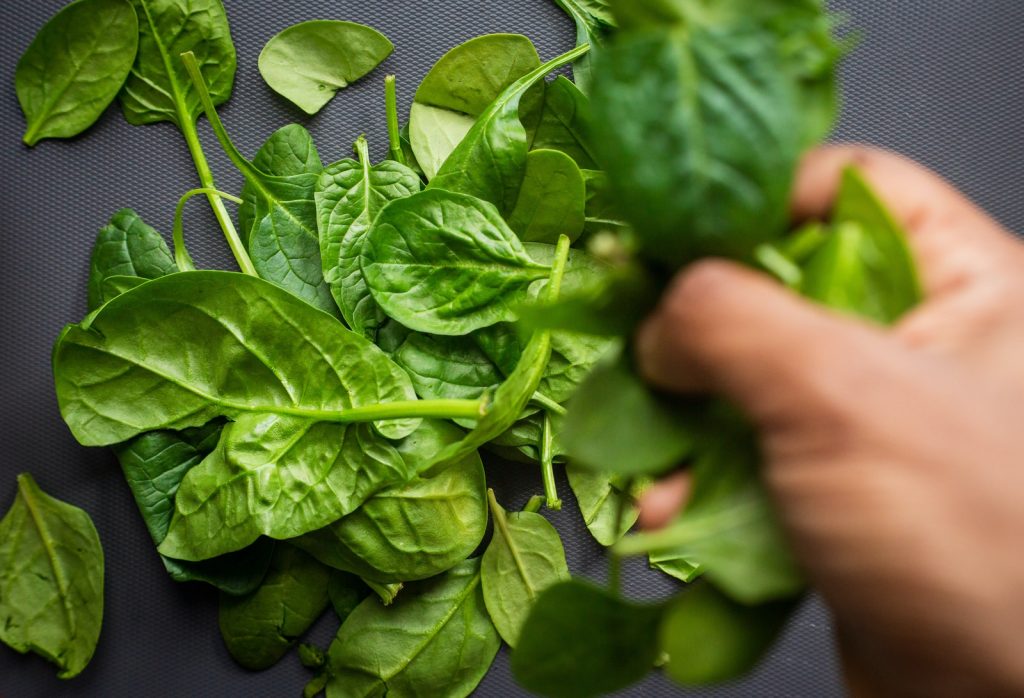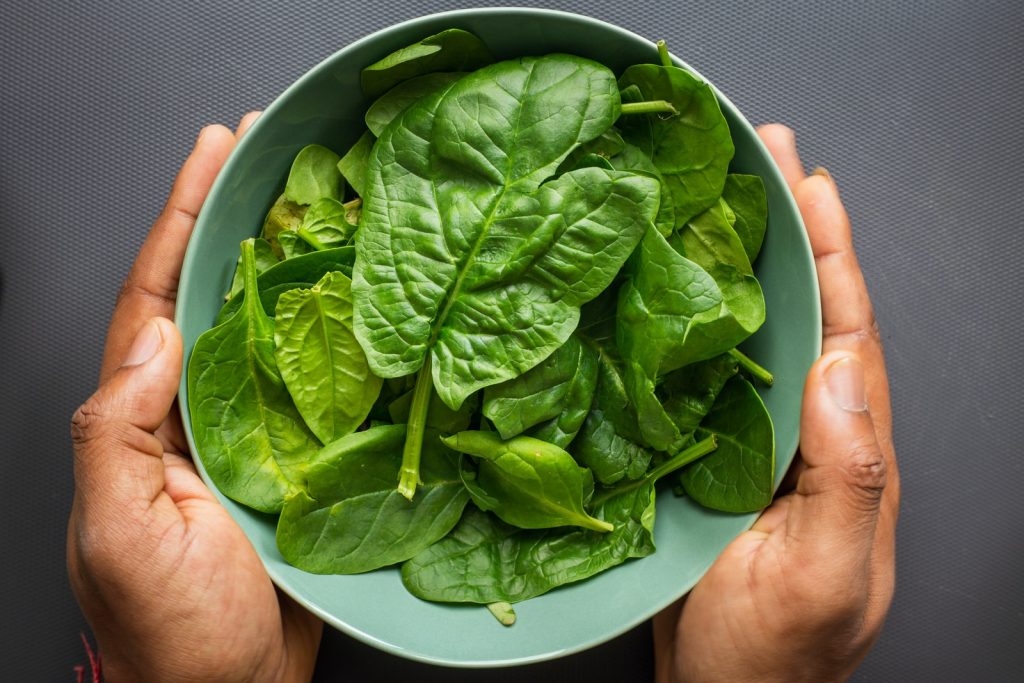Lettuce and spinach are two vegetables rich in nutrition and known for weight-loss food as low-calorie additions to a well-balanced, healthy diet. These two elements are approachable year-round and relatively inexpensive. They are also preferred in meal planning. However, spinach and Lettuce are two distinct types of plants and thus differ in taste, texture and nutritional makeup.
Whenever you want to lose weight or add nutrient-dense food to your diet, Lettuce and spinach are excellent choices. Lettuce and spinach are both lovable ingredients for salads and sandwiches, and both of them are naturally low in calories and provide fibre, vitamins and minerals.
Classification– Lettuce are layered, crunchy and often green vegetables; Lettuce belongs to the Asteraceae family and the Lactuca genus, while Spinach (Spinacia oleracea), belongs to the amaranth family (Amaranthaceae), used as a vegetable.
Basic Nutrition
Table of Contents
Lettuce provides more vitamins and minerals than iceberg lettuce and can be compared to spinach with a one-cup serving size of each. According to the United States Department of Agriculture Nutrient Database, leaf lettuce includes five calories, 0.49 grammes of protein, and 0.05 grammes of total fat. Spinach has seven calories, 0.86 g protein, and 0.12 g fat. In addition, Lettuce provides 0.5 grammes of dietary fibre, while spinach contains 0.7 grammes.
Vitamins
Both leaf lettuce and spinach are high in vitamin A, with Lettuce containing 2,666 international units and spinach containing 2,813 international units. According to the Institute of Medicine, one cup of spinach contains nearly 100 per cent of the recommended daily intake of iron. In addition, Lettuce and spinach include about 6% of the daily recommended thiamin consumption, while spinach has more other vitamins. For example, there are 3.3 milligrammes of vitamin C in leaf lettuce, as well as trace levels of riboflavin, niacin, and vitamin B-6. Spinach offers twice as much of each of those vitamins, with 8.4 milligrammes of vitamin C, or nearly 10% daily requirement. In addition, leaf lettuce provides four to five times the folate and vitamin K as spinach.
Minerals
Leaf lettuce has roughly three times as much calcium, iron, and potassium as spinach. Spinach is high in calcium, iron, and potassium, with 30 milligrammes of calcium, 0.81 milligrammes of iron, and 167 milligrammes of potassium. Spinach also has significantly more magnesium and sodium than Lettuce.
Phytochemicals
Carotenoids, which are plant-based chemicals, are abundant in dark green leafy vegetables. Lutein and zeaxanthin, two essential carotenoids present in spinach and green leaf lettuce, are the only antioxidants present in the eye. According to the Linus Pauling Institute, lutein and zeaxanthin protect your eyes from blue light and have been linked to a lower incidence of age-related cataracts and macular degeneration. Spinach contains about ten times the amount of lutein and zeaxanthin found in Lettuce.
Comparisons between Lettuce and Spinach

Lettuce and spinach are way more similar in many aspects than thought. These two green vegetables are the two primary ingredients used in preparing a salad. They both are leaf vegetables. Lettuce and spinach both follow the general rule that darker-coloured plants contain more nutrients that the human body may use than lighter-coloured ones. One of the significant difference between these two, separate from nutritional content and taste, is that baby spinach is eaten raw or cooked. In contrast, Lettuce is usually, though not always, eaten raw.
What are the most significant health benefits of spinach?
1. Good Eyesight: Spinach is high in beta carotene, lutein, and xanthene, all of which are good for your vision. Vitamin A deficiency, itching eyes, eye ulcers, and dry eyes can all be helped with this supplement. This is due to some of the spinach’s anti-inflammatory characteristics, which can help to reduce puffiness and inflammation around the eyes.
2. Maintains Blood Pressure: Spinach has a very high potassium content and low sodium content. The folate present in spinach also helps in the reduction of hypertension and relaxes blood vessels while maintaining proper blood flow.
3. Bone Mineralization: Spinach contains other minerals like manganese, copper, magnesium, zinc, and phosphorus also help in the building up of strong bones and prevent an individual from developing osteoporosis of the bones.
4. Anti-Inflammatory Capacity: There are many Anti-Inflammatory compounds found in spinach. They are classified into the category of methylene dioxyflavonol glucuronides, and spinach is one of the most potent vegetables in reducing inflammation throughout the body.
5. Diabetes management: Spinach contains an antioxidant known as alpha-lipoic acid, which has been shown to lower glucose levels, increase insulin sensitivity and prevent oxidative stress-induced changes in patients with diabetes.
6. Healthy Skin and Hair: Vitamin A is abundant in spinach, required for sebum production to keep hair nourished. Vitamin A is necessary for the development of all human tissues, including skin and hair. Therefore, spinach and another vitamin C-rich leafy greens are essential.
Nutrition Facts
Serving Size: 1cup, shredded
Calories in Lettuce -Amount Per Serving
Calories
- Total Fat: 0 g
- Saturated Fat: 0 g
- Polyunsaturated Fat 0 g
- Monounsaturated Fat 0 g
- Cholesterol 0 mg
- Sodium: 4 mg
- Potassium 162 mg
- Total Carbohydrate 1 g
- Dietary Fiber 1 g
- Sugars 1 g
- Protein 1 g
- Calories in Spanish-Amount Per Serving
- Calories 7
- Total Fat 0 g
- Saturated Fat 0 g
- Polyunsaturated Fat 0 g
- Monounsaturated Fat 0 g
- Cholesterol 0 mg
- Sodium 24 mg
- Potassium 167 mg
- Total Carbohydrate 1 g
- Dietary Fiber 1 g
- Sugars 0 g
- Protein 1 g
How To Harvest Lettuce
1. Lettuce has to be harvested in full size but just before maturity. This is because the leaves taste good when they are still young and tender.
2. Before maturity, remind yourself to harvest leaf lettuce by simply removing outer leaves so that the centre leaves can continue growing.
3. Butterhead, romaine, and loose-leaf types are harvested by removing the outer leaves, digging up the whole plant, or cutting the plant about an inch above the soil surface. Another harvesting procedure is often possible when using the first or third methods.
4. Crisphead lettuce should be picked when the centre is firm.
Conclusion
Flat-leaved, semi-crinkle-leaved (semi-savoy), and crinkle-leaved (savoy) spinach cultivars are available. Flat-leaved varieties are better for canning, whereas crinkle-leaved types are ideal for new users. Only particular varieties of spinach should be used due to fungus illnesses that harm the growth and look of the leaves. Spinach is a cool-season crop that should be sown in September from seed. In warm soils, spinach seed does not germinate well. Therefore, to avoid a poor stand, the first planting should occur when soil temperatures are 75 degrees F. or below, which is now the case. . Lettuce is most commonly associated with salads, although it can also be found in soups, sandwiches, and wraps; it can also be grilled. It contains fibre, iron, folate, and vitamin C. Lettuce also includes several other health-promoting bioactive chemicals. The bioactive chemicals in Lettuce have been proven to have anti-inflammatory, cholesterol-lowering, and anti-diabetic properties in vitro and animal investigations.
